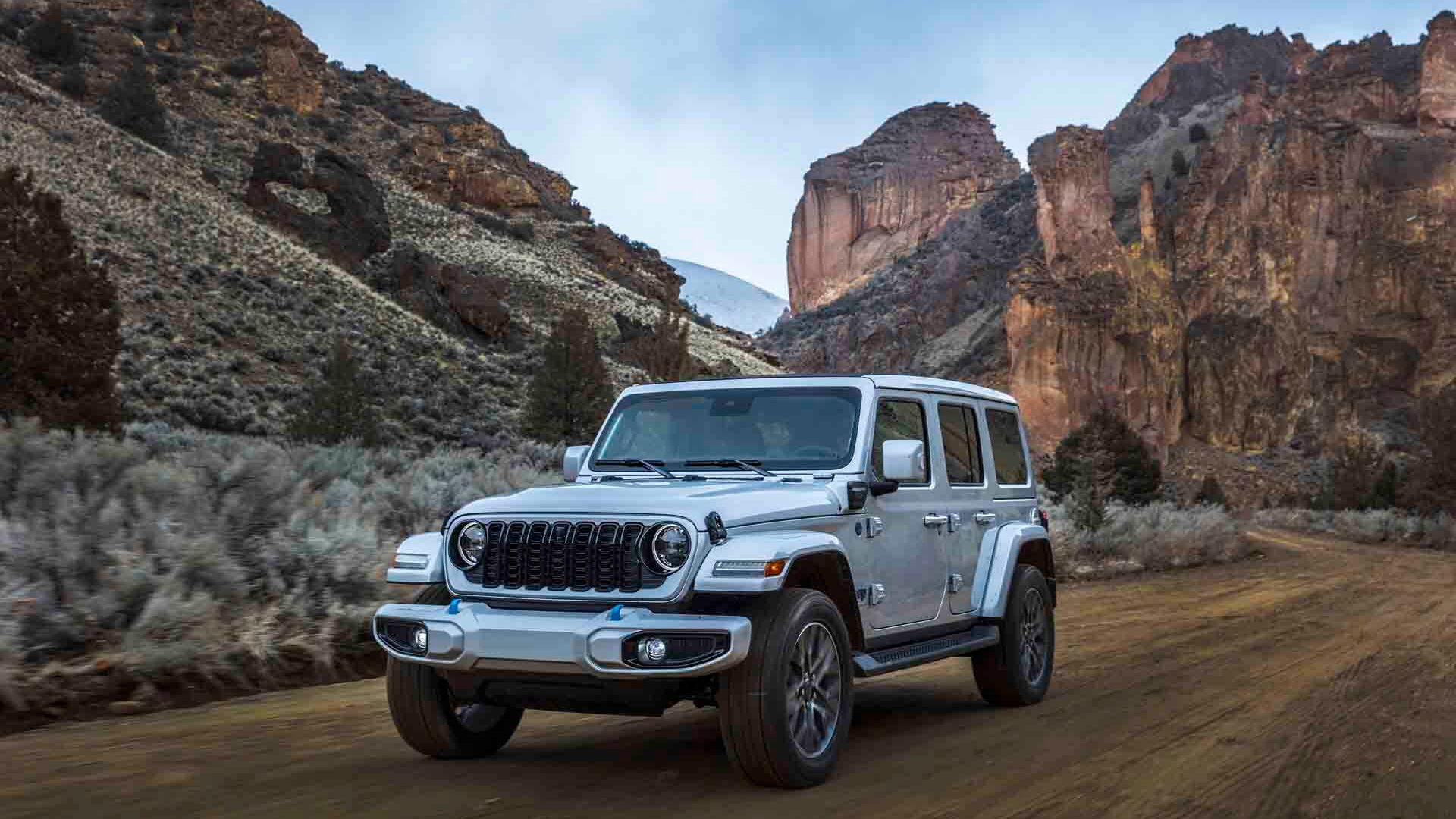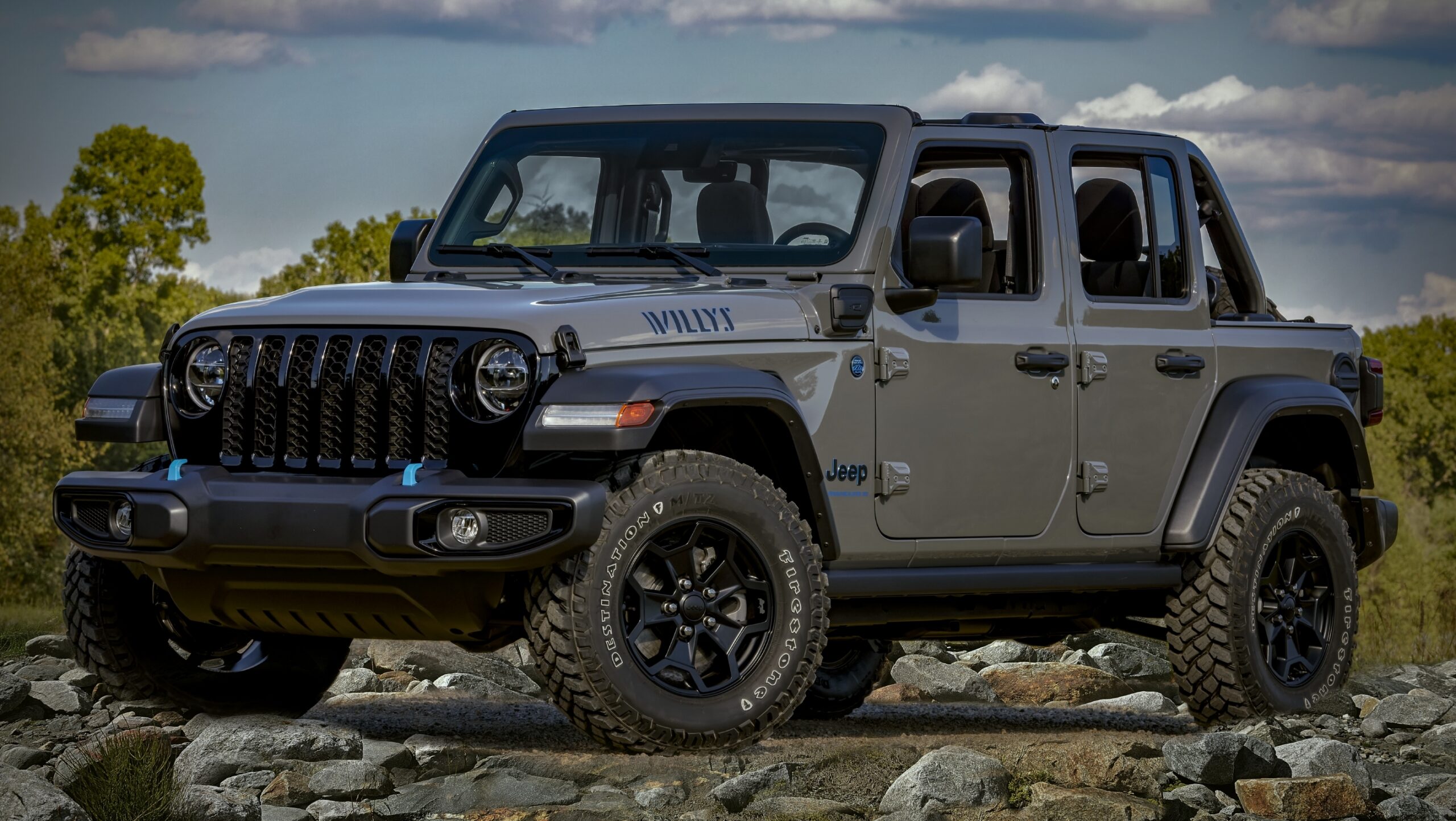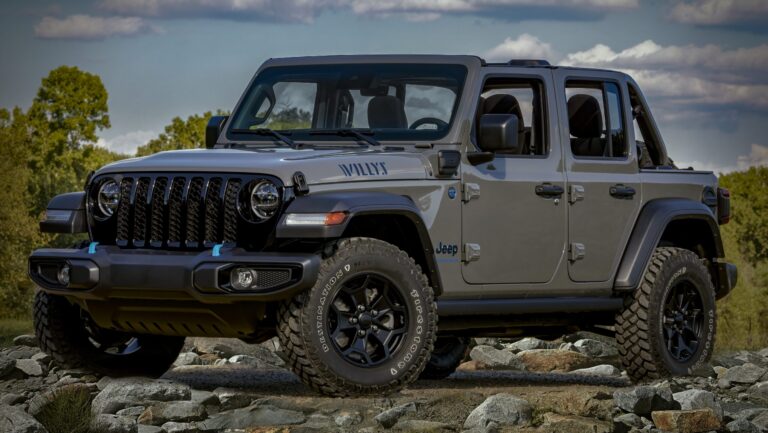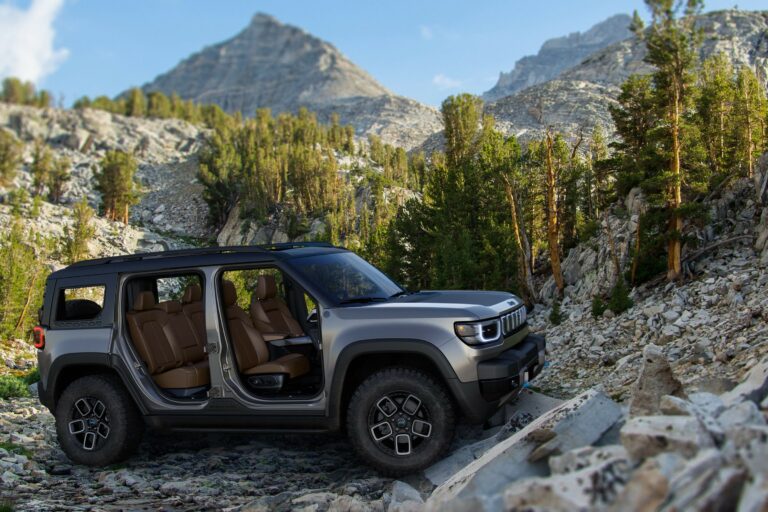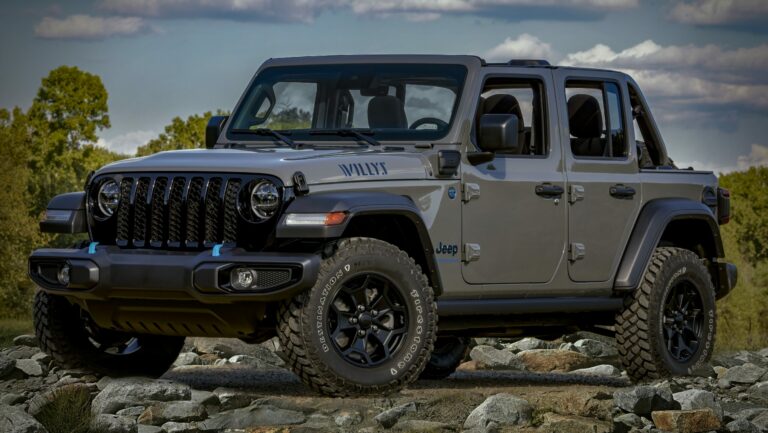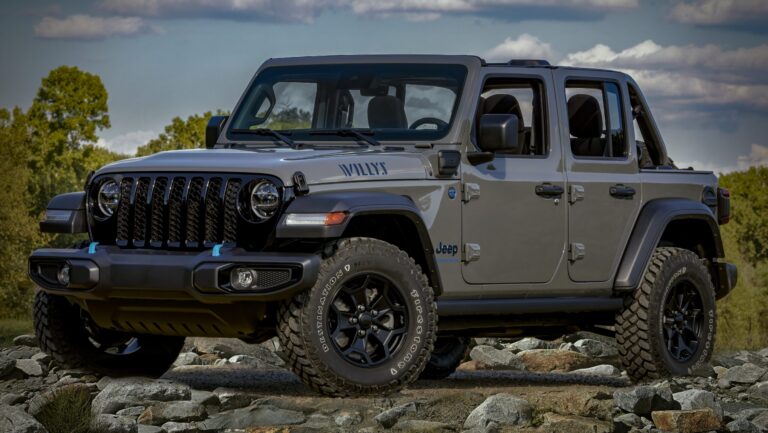Jeep Wrangler 2 Door Modified: The Ultimate Customization Guide
Jeep Wrangler 2 Door Modified: The Ultimate Customization Guide jeeps.truckstrend.com
The Jeep Wrangler, especially its iconic 2-door variant, isn’t just a vehicle; it’s a blank canvas for adventure, a statement of individuality, and a testament to rugged capability. While formidable straight from the factory, the true spirit of the Jeep Wrangler often comes alive through modification. "Jeep Wrangler 2 Door Modified" refers to the extensive world of aftermarket enhancements, upgrades, and personal touches owners apply to transform their compact off-roaders into bespoke machines tailored for specific terrains, performance goals, or aesthetic visions. It’s about pushing boundaries, overcoming limitations, and making an already capable vehicle truly exceptional. This guide delves deep into the multifaceted journey of modifying a 2-door Jeep Wrangler, offering insights, practical advice, and a roadmap for your ultimate build.
Why Modify Your 2-Door Wrangler?
Jeep Wrangler 2 Door Modified: The Ultimate Customization Guide
The decision to modify a 2-door Wrangler stems from a variety of desires, each contributing to the unique appeal of a customized build:
- Enhanced Off-Road Capability: The primary driver for many. Modifications like lift kits, larger tires, upgraded suspension components, and reinforced drivetrain parts significantly improve ground clearance, articulation, traction, and overall resilience for tackling challenging trails, rock crawling, or deep mud.
- Personal Expression & Aesthetics: Beyond performance, modification is a powerful form of self-expression. From custom paint jobs and unique fender flares to specialized lighting and interior upgrades, owners can tailor their Wrangler to reflect their personality and stand out from the crowd. The compact nature of the 2-door makes it particularly agile and visually distinct when modified.
- Improved On-Road Performance (Selectively): While often associated with off-roading, certain modifications can enhance daily driving. Upgraded brakes, steering components, and even specific tire choices can improve handling, safety, and comfort, especially when accommodating larger tires or heavier accessories.
- Increased Durability & Protection: Stock Wranglers are tough, but hardcore off-roading demands more. Aftermarket armor like steel bumpers, rock sliders, and skid plates provide crucial protection against impacts, safeguarding vital components and the vehicle’s body.
- Adaptation for Specific Use Cases: Whether it’s overlanding, rock crawling, desert racing, or simply a more capable daily driver, modifications allow owners to fine-tune their 2-door Wrangler for its intended purpose, optimizing it for specific demands that the factory setup might not meet.
![]()
Essential Modification Categories for Your 2-Door Wrangler
Modifying a Jeep Wrangler 2-door involves a holistic approach, addressing various aspects of the vehicle. Here’s a breakdown of key modification categories:
1. Suspension & Lift Kits
This is often the first and most impactful modification. Lift kits increase ground clearance, allowing for larger tires and improving approach, departure, and break-over angles.
- Types:
- Budget Boosts/Spacer Lifts: Inexpensive way to gain 1-2 inches by adding spacers above coil springs. Good for minor tire upgrades.
- Coil Spring Lifts: Replace stock springs with taller, often firmer, aftermarket coils for 2-4 inches of lift. Improves ride quality and articulation.
- Short Arm vs. Long Arm Lifts: Short arm kits use stock control arm mounting points and are suitable for up to 3.5-4 inches of lift. Long arm kits relocate control arm mounts further back on the frame, providing better articulation and ride quality for 4+ inch lifts, but are more complex and costly.
- Considerations: Higher lifts often require drive shaft upgrades, track bar adjustments, and possibly steering component modifications to maintain proper geometry and prevent "death wobble."

2. Wheels & Tires
Crucial for traction and off-road performance. Larger tires are a common goal after a lift.
- Tire Types:
- All-Terrain (AT): Good balance for on-road comfort and off-road grip.
- Mud-Terrain (MT): Aggressive tread for maximum traction in mud, rocks, and loose terrain; noisier on-road.
- Wheel Types:
- Steel Wheels: Durable, affordable, but heavy.
- Alloy Wheels: Lighter, better heat dissipation, wide variety of designs.
- Beadlock Wheels: Secure the tire bead to the wheel, allowing very low tire pressures off-road without de-beading. Primarily for serious off-roaders.
- Sizing: The 2-door Wrangler can typically accommodate 33-inch tires with a 2-inch lift, and 35-inch tires with a 2.5-3.5-inch lift (often requiring fender trimming or flat fenders). 37-inch tires usually demand 4+ inches of lift and significant drivetrain upgrades.
3. Armor & Protection
Essential for safeguarding your investment during aggressive off-roading.
- Bumpers (Front & Rear): Aftermarket steel bumpers offer superior protection, increased approach/departure angles, and often integrate winch mounts, D-ring recovery points, and auxiliary light mounts.
- Rock Sliders: Protect the rocker panels (the body area between the wheels) from impacts with rocks and obstacles. They also serve as a step.
- Skid Plates: Protect vital underside components like the oil pan, transmission, transfer case, and fuel tank from impacts.
- Fender Flares: Flat or high-clearance fender flares allow for larger tire articulation without rubbing and can improve aesthetics.
4. Drivetrain & Axles
As tire size increases, the stock drivetrain components can become a weak link.
- Re-gearing: Installing lower (numerically higher) gear ratios in the differentials restores lost power and torque caused by larger tires, improving acceleration and reducing strain on the engine and transmission.
- Lockers: Selectable or automatic lockers maximize traction by locking the differential, sending equal power to both wheels on an axle, even if one is off the ground.
- Axle Upgrades: For very large tires (37-inch+) and extreme off-roading, upgrading to stronger axles (e.g., Dana 44 front or full-float Dana 60s) may be necessary to prevent breakage.
- Driveshafts: Lift kits often require aftermarket driveshafts, especially the front, to accommodate altered angles and prevent premature wear or failure.
5. Recovery Gear & Accessories
Preparedness is key for any off-road adventure.
- Winch: An indispensable tool for self-recovery or assisting others. Front bumper-mounted winches are common.
- Auxiliary Lighting: LED light bars, spot lights, and flood lights significantly improve visibility during night driving or trail navigation.
- Air Compressor: For airing down tires on the trail for better traction, and then airing back up for on-road comfort.
- Hi-Lift Jack: A versatile tool for lifting the vehicle, winching, or spreading.
- Storage Solutions: The 2-door’s limited cargo space means efficient storage solutions like tailgate racks, interior storage bins, or roof racks (if applicable) are highly valuable for carrying gear.
6. Engine & Performance (Optional)
While not always the first step, some modify for more power.
- Cold Air Intakes & Exhaust Systems: Can provide minor power gains and improved engine sound.
- Engine Tuners/Programmers: Optimize engine parameters for performance, often necessary to recalibrate speedometer/odometer for larger tires and new gear ratios.
- Forced Induction (Superchargers/Turbos): Significant power gains, but complex and expensive; usually for dedicated performance builds.
7. Interior Upgrades
Enhance comfort, safety, and functionality.
- Aftermarket Seats: More supportive for off-roading, can be waterproof.
- Grab Handles: Essential for passenger stability on rough terrain.
- Communication Systems: CB radios or ham radios for trail communication.
- Organizers & Storage: Maximize the limited interior space.
Planning Your Build: Important Considerations
Modifying your 2-door Wrangler is an investment of time and money. Careful planning is crucial:
- Budget: Set a realistic budget and stick to it. Modifications can quickly add up. Prioritize what’s most important for your intended use.
- Intended Use: Will it be a daily driver, a weekend warrior, or a dedicated rock crawler? This dictates the type and extent of modifications needed. A heavily modified crawler might not be comfortable or legal for daily commuting.
- Legal Compliance: Research local laws regarding lift height, tire protrusion, fender flares, and emissions. What’s legal in one state might not be in another.
- Professional Installation vs. DIY: Some modifications are DIY-friendly (e.g., bolt-on bumpers), while others (e.g., re-gearing, complex suspension installs) are best left to experienced professionals. Assess your mechanical skills and available tools.
- Component Compatibility: Ensure all chosen parts work together seamlessly. For example, a lift kit might require specific control arms, brake lines, or driveshafts.
- Impact on Warranty & Insurance: Major modifications can potentially void parts of your factory warranty. Inform your insurance provider about significant upgrades to ensure proper coverage in case of an accident or theft.
Tips for a Successful Modification Journey
- Research Thoroughly: Before buying anything, spend time on forums, watch videos, and read reviews. Learn from others’ experiences.
- Start Small & Phased: You don’t need to do everything at once. Begin with foundational mods like a modest lift and tires, then build from there as your needs and budget allow.
- Prioritize Safety: Ensure all modifications are installed correctly and safely. Don’t cut corners on critical components like steering or brakes.
- Join Communities: Engage with local Jeep clubs or online forums. They are invaluable resources for advice, tips, and even help with installations.
- Document Your Build: Take photos and notes. It’s rewarding to look back at your progress, and it can help if you ever need to troubleshoot.
Challenges & Solutions
- "Death Wobble": A violent shaking of the front end, often experienced in lifted Wranglers.
- Solution: Usually caused by worn steering components, improper alignment, or incorrect caster angles. Address worn parts (ball joints, tie rod ends, track bar), ensure proper alignment, and consider aftermarket control arms or geometry correction brackets to adjust caster.
- Cost Overruns: Modifications are expensive, and unforeseen issues can arise.
- Solution: Build in a contingency fund (10-20% of your budget) for unexpected costs. Prioritize and phase your mods.
- Compatibility Issues: Parts not fitting or working well together.
- Solution: Buy from reputable brands known for their fitment. Read reviews and consult with experienced modders or shops before purchasing.
- Increased Maintenance: Modified Jeeps often require more frequent checks and specialized maintenance.
- Solution: Be diligent with inspections, fluid checks, and component lubrication. Learn how your new parts work and their maintenance requirements.
Price Table: Common Jeep Wrangler 2-Door Modification Costs (Estimated)
Please note: Prices are highly variable based on brand, quality, complexity, and whether you DIY or pay for professional installation. These are general estimates for parts only, unless specified.
| Modification Category | Item | Estimated Cost Range (USD) | Notes |
|---|---|---|---|
| Suspension | 2.5" Lift Kit (Basic) | $500 – $1,500 | Spacer lift to basic coil spring lift, no shocks |
| 2.5" Lift Kit (Advanced) | $1,500 – $3,500 | Complete kit with new shocks, springs, control arms | |
| 4" Long Arm Lift Kit | $3,000 – $7,000+ | For serious articulation, complex install | |
| Wheels & Tires | Set of 5 (35" MT Tires) | $1,500 – $3,000 | High-quality Mud-Terrain tires |
| Set of 5 (Alloy Wheels) | $800 – $2,000 | Standard aftermarket wheels | |
| Set of 5 (Beadlock Wheels) | $2,000 – $4,000+ | Specialty wheels for extreme off-roading | |
| Armor & Protection | Front Bumper (Steel) | $500 – $1,500 | Winch-ready, D-rings |
| Rear Bumper (Steel) | $400 – $1,200 | With or without tire carrier | |
| Rock Sliders | $300 – $1,000 | Body-mounted or frame-mounted | |
| Skid Plate System | $500 – $1,500 | Protecting oil pan, transmission, transfer case | |
| Flat Fender Flares | $300 – $800 | Allows for more tire clearance | |
| Drivetrain | Re-gearing (Front & Rear) | $1,500 – $3,000 | Parts & labor, critical for larger tires |
| Differential Locker (each) | $500 – $1,500 | Selectable or automatic | |
| Heavy-Duty Driveshafts | $500 – $1,200 (each) | For lifted applications, prevents binding | |
| Recovery & Acc. | Electric Winch (8k-10k lb) | $400 – $1,500 | Synthetic rope often more expensive |
| LED Light Bar (30-50") | $100 – $500 | Auxiliary lighting for trails | |
| On-Board Air Compressor | $200 – $600 | Portable or mounted | |
| Installation Labor | Professional Installation | 20-50% of parts cost | Varies widely by shop rates and complexity of job |
Disclaimer: These are rough estimates. Prices can fluctuate significantly based on brand reputation, material quality, technological features, and market demand. Always get detailed quotes for specific parts and labor.
Frequently Asked Questions (FAQ)
Q1: Is it worth modifying a 2-door Wrangler?
A1: Absolutely! The 2-door Wrangler’s shorter wheelbase makes it incredibly agile and maneuverable off-road. Modifications enhance its already impressive capabilities, turning it into a highly personalized and potent off-road machine that excels in tight trails and rock crawling.
Q2: How much does it cost to modify a 2-door Wrangler?
A2: The cost varies immensely. A basic lift and tire upgrade might be $3,000-$5,000. A comprehensive build with axle upgrades, re-gearing, full armor, and premium suspension can easily run $15,000-$30,000 or more, not including the base vehicle cost.
Q3: What’s the best first mod for a 2-door Wrangler?
A3: Generally, a modest lift kit (2-3 inches) combined with larger, more aggressive tires (33-35 inches) is considered the best first step. This significantly improves off-road capability and gives the Jeep a more aggressive stance without requiring extensive additional modifications initially.
Q4: Will modifying my Wrangler void the warranty?
A4: Not necessarily the entire warranty. The Magnuson-Moss Warranty Act protects consumers, stating that a manufacturer cannot void a warranty simply because an aftermarket part is used. However, if a modification directly causes a failure of a factory component (e.g., a lift kit causing a driveshaft failure), the warranty on that specific component may be denied. Always check with your dealer and read your warranty carefully.
Q5: What is "Death Wobble" and how can I avoid it?
A5: "Death Wobble" is a severe, uncontrollable oscillation of the front wheels, typically occurring in lifted solid-axle vehicles like the Wrangler. It’s usually caused by worn steering or suspension components, or improper suspension geometry (specifically caster angle). To avoid it, ensure all steering and suspension components are in good condition, and that your lift kit properly corrects suspension geometry. Quality parts and professional installation are key.
Q6: Can I daily drive a heavily modified 2-door Wrangler?
A6: While possible, a heavily modified Wrangler (especially with large lifts and aggressive tires) may compromise on-road comfort, fuel economy, and handling. It might be noisier, ride rougher, and require more frequent maintenance. Many owners opt for a balance that allows for both capable off-roading and acceptable daily driving.
Conclusion
The journey of modifying a 2-door Jeep Wrangler is more than just installing parts; it’s an immersive experience that deepens your connection with your vehicle and the off-road lifestyle. From enhancing its legendary capability on the trails to expressing your unique personality through custom aesthetics, a modified 2-door Wrangler becomes a true extension of its owner. While it requires careful planning, a solid budget, and often a willingness to get your hands dirty, the rewards — unparalleled adventure, a sense of accomplishment, and a truly one-of-a-kind vehicle — are immeasurable. Embrace the challenge, enjoy the process, and unleash the full potential of your compact, mighty Jeep.
